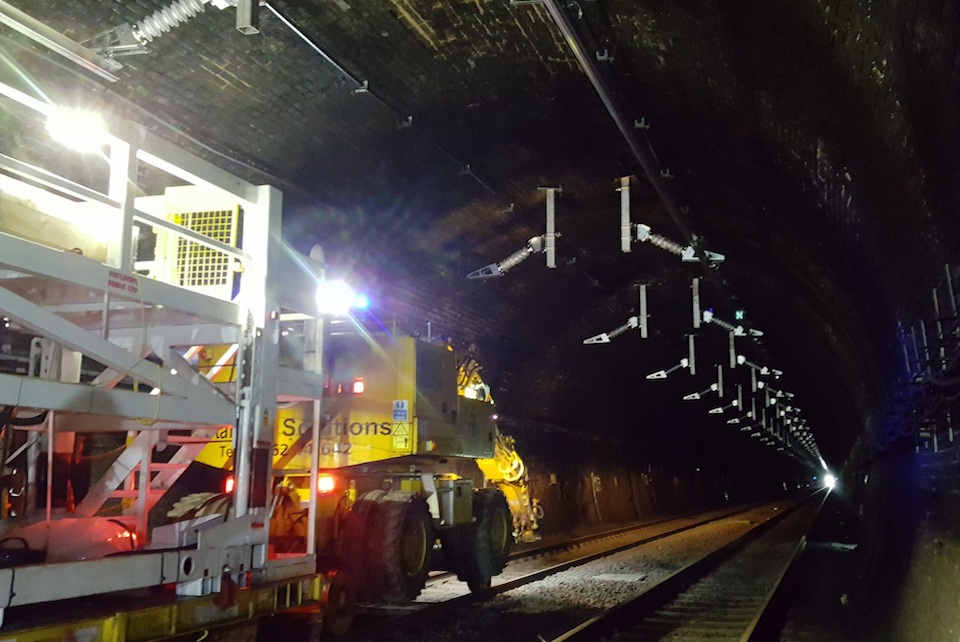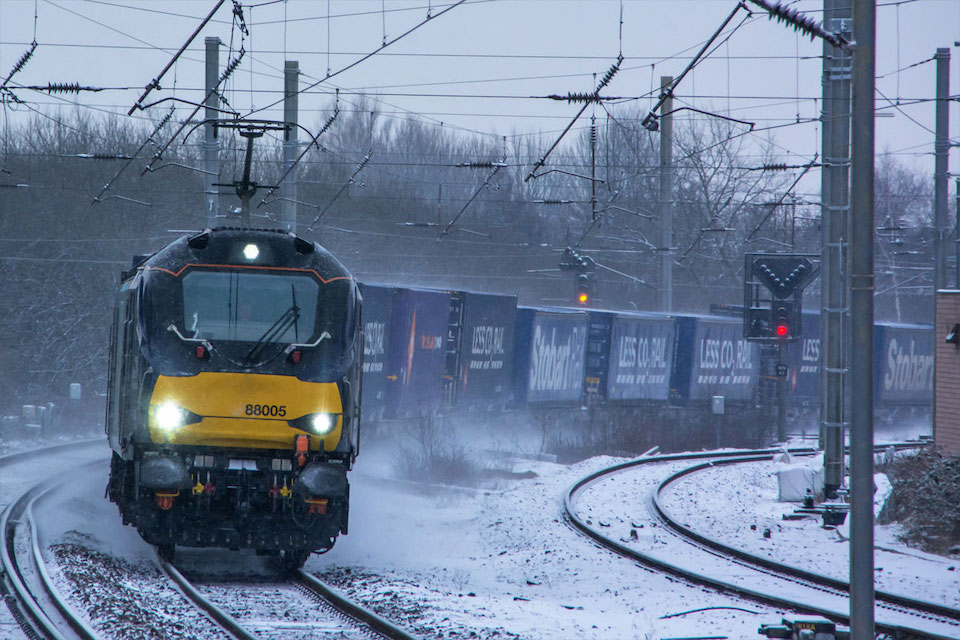UK Railway Industry urges government to meet net-zero goals

Following the launch of their RailDecarb23 campaign, the Railway Industry Association (RIA), which represents the supply chain in the UK industry, has published a new paper which brings together the key benefits of rail electrification, from lower costs to reduced journey times. The paper argues that without proper investments, the set net-zero railway targets will be missed.
The principle benefits of electrification have been quantified and outlined by the Railway Industry Association. They make five key observations, looking at costs, reliability, efficiency, journey times and capacity, and a special observation dedicated to the freight market, where the RIA says electric trains are faster and longer, which supports green economic aims by taking more heavy goods vehicles off the roads of the UK, and as a consequence of increased speed and reliability, electrification of freight services also improves capacity for freight and passenger services alike.
Electric freight all the way to the loading bay
The paper “Rail Electrification: The Facts” has been published a few weeks after the launch of RIA’s RailDecarb23 campaign, which calls on the UK government to take action now to enable the rail industry to remove all diesel-only trains from the network by 2040 and reach net-zero carbon in the economy by 2050. Notably, the former figure is almost as stringent as the target set by the Scottish government, which aims to have all diesel traction off the Scottish passenger network by 2035.
“An electric railway is the most efficient method for transporting passengers and freight, ultimately resulting in long-term reduced operational costs”, said Noel Dolphin, the co-author of the report. Dolphin is also a director at Furrer+Frey, the Swiss parented company that has developed a retractable catenary system designed to allow mainline electric locomotives to haul their loads right into the loading areas of freight depots. “Not only does this contribute to our critical goal of decarbonisation, but it also paves the way for a superior railway experience that is more reliable, cost-effective, and able to accommodate increased capacity”, he added.

Rail already plays a crucial role when it comes to decarbonisation, being a small part of the problem but a big part of the solution, according to the RIA. Rail is one of the greenest forms of transport, contributing just one point four per cent of transport emissions despite carrying ten per cent of all journeys and accounting for under one per cent of all UK emissions. As everyone knows, a single freight train removes up to 76 lorries from the roads, significantly reducing carbon emissions.
Targets are set to be missed
Rail has an excellent record for environmental sustainability, but it also has the potential to deliver even more, argues the RIA in their paper. “The industry needs the government to accelerate its decarbonisation plans”, they say. “Insufficient investment in electrification and new traction technologies like hydrogen and battery means that government targets of removing all diesel-only trains by 2040 and achieving a fully Net Zero railway by 2050 are currently set to be missed.”
The study’s principle findings:
- Costs: Over the life of a train, an electric railway is the cheapest to operate, even factoring in electrification construction costs. Saving two to three million pounds per vehicle (2,4 – 3,6 million euros);
- Reliability: Electric trains are 40 per cent – 300 per cent more reliable than diesel trains;
- Efficiency: Electric trains are three times more efficient than diesel or hydrogen trains. Reducing energy demands;
- Journey Times and Capacity: Electric trains accelerate more quickly, allowing more trains and capacity on a route; and
- Freight: Electric freight trains are faster and longer, supporting both taking more lorries off the roads and passenger capacity.
“As part of RIA RailDecarb23 campaign, we’re calling on the Government to dramatically accelerate the pace of rail electrification”, said David Clarke, RIA’s Technical Director. “Doing so will be essential if we are to remove all diesel-only trains from the network by 2040 and achieve a Net Zero railway by 2050. The regrettable fact is that these targets are set to be missed as the pace and trajectory of rail electrification is simply inadequate. Official statistics show that in 2021/22, just 2.2km of the railway was electrified.
RIA is far from alone is calling for the Government to step-up their decarbonisation programme. A recent Transport Committee report (Fuelling the future: motive power and connectivity) says that Ministers need to speed up progress with electrifying the UK’s railways lines and publish a long-term strategy for decarbonising the rail network. The Chartered Institute of Logistics and Transport in the UK (CILT) has produced a roadmap which sets out how 95 per cent of rail freight operations could be electrified by the mid-2040s at a lower cost compared to recent schemes.




